STATRef has released their quarterly update! The new features expands their already extensive collection of books and practice test. The updates included:
- Test banks to prepare for the Orthopedic Surgery and Preventive Medicine Board Exams
- Improved Nurse Practitioner Package:
- Adult Gerontology Primary Care NP
- Pediatric Primary Care NP
- Advanced Administrative Functionality
- New test banks and other features:
- More Medical Board Specialties
- Medicine
- Internal and Emergency Medicine
- Pathology
- Psychiatry
- Surgery
- And many more test
- Improved Nurse Practitioner Package:
- Two New Test Banks
- Adult Gerontology Primary Care
- Pediatric Primary Care
- Enhanced Administrative Functionality:
- Monitor user performance and identify under-performers
- Send customized exams to students
- Utilize questions in classroom discussion
Please visit StatRef to explore all of the new features!
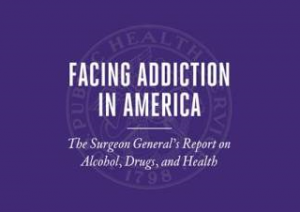
On November 29th, the US Surgeon General‘s Office released the office’s first ever comprehensive report on addiction. The full report, Facing Addiction in America: the Surgeon General’s Report on Alcohol, Drugs, and Health, is over 400 pages long. There is an Executive Summary which is 36 pages in length.
The Journal of the American Medical Association (JAMA) has published a new article by Dr. Victor R. Fuchs entitled “Black Gains in Life Expectancy”. The article explains how much the life expectancy of Black Americans has increased. The article goes on to detail the leading factors which contributed in closing the gap between Black life expectancy and White life expectancy between the years of 1995 and 2014.
The journal issue is available to LSUHSC faculty, staff & students. It can be accessed off-campus with a valid LSUHSC library barcode & PIN. You can find more information at our remote access webpage.
If you are on campus or already logged in, you can access the article here.
The Isché Library is kicking off the fall semester by featuring E-book editions of required textbooks! The newest editions of the books on display are available in our online catalog.
The display is located near the 3rd floor elevator along with the links to the current E-book edition. Subjects include physiology, anatomy, dermatology, nursing, biochemistry, pathology, diagnostic examination, anesthesia, obstetrics, and more.
These books and many more are available for online access.
Featured E-books from EBSCOhost:

EBSCOhost E-books may be printed, saved, or emailed one chapter at a time
- Atlas of Human Poisoning and Envenoming, 2nd ed., by James H. Diaz
- Pharmacology in Rehabilitation, 5th ed., by Charles D. Ciccone
- Health Program Management : From Development Through Evaluation / Managing Health Programs and Projects, 2nd ed., by Beaufort B. Longest Jr.
- The Developing Human : Clinically Oriented Embryology, 9th ed., by Keith L. Moore
- Robbins and Cotran Pathologic Basis of Disease, 9th ed., edited by Vinay Kumar, Abul K. Abbas, Jon C. Aster ; with illustrations by James A. Perkins
- Reading, Understanding, and Applying Nursing Research, 4th ed., by James A. Fain
Featured E-books from AccessMedicine:
 AccessMedicine E-books may be printed one chapter at a time but may not be saved.
AccessMedicine E-books may be printed one chapter at a time but may not be saved.
- Jawetz, Melnick, & Adelberg’s Medical Microbiology, 27th ed., by Karen Carroll
- DeGowin’s Diagnostic Examination, 10th ed., edited by Richard F. LeBlond, Donald D. Brown, Manish Suneja & Joseph F. Szot ; illustrated by Elmer DeGowin, Jim Abel, & Shawn Roach
- Endocrine Physiology, 4th ed., by Patricia E. Molina
- Williams Obstetrics, 24th ed., edited by F. Gary Cunningham, Kenneth J. Leveno, Steven L. Bloom, Catherine Y. Spong, Jodi S. Dashe, Barbara L. Hoffman, Brian M. Casey & Jeanne S. Sheffield
- Fitzpatrick’s Color Atlas and Synopsis of Clinical Dermatology, 7th ed., by Thomas Bernard Fitzpatrick
Featured E-books from LWW Health Library:
 LWW Health Library E-books may be printed one chapter at a time but may not be saved. Emailed chapters are valid for 72 hours only.
LWW Health Library E-books may be printed one chapter at a time but may not be saved. Emailed chapters are valid for 72 hours only.
- Grant’s Atlas of Anatomy, 13th ed., edited by Anne M.R. Agur & Arthur F. Dalley
- Grant’s Dissector, 15th ed., by Patrick W. Tank
- Biochemistry, 6th ed., by Richard A. Harvey
- Bates’ Guide to Physical Examination and History Taking, 11th ed., by Lynn S. Bickley
- Neuroanatomy in Clinical Context: An Atlas of Structures, Sections, Systems, and Syndromes, 9th ed., by Duane E. Haines
- Clinically Oriented Anatomy, 7th ed., by Keith L. Moore, Arthur F. Dalley, II; & Anne M. R. Agur
Other Featured E-books:
Anatomy, Basic Sciences, E-Book News, E-Resource News, Library News, Medicine, Microbiology, Neuroscience, Nursing, Pathology | Permalink | Comments Off on E-Books Display! | Posted Monday, August 15, 2016 by Corder, Amy L.
We’re just over a month late, but July 1 was the anniversary for the founding of the Centers for Disease Control. The Center was founded in 1946 from the Malaria Control in War Areas, a program within the U.S. Public Health Service. Enjoy this timeline of their history.
 We are pleased to announce that our AccessMedicine subscription has been upgraded to an institutional site license with no restrictions on the number of users. That means no more lock-outs for AccessMedicine. Many thanks are owed to the School of Medicine for contributing funds to support this upgrade. We couldn’t have done it without you!
We are pleased to announce that our AccessMedicine subscription has been upgraded to an institutional site license with no restrictions on the number of users. That means no more lock-outs for AccessMedicine. Many thanks are owed to the School of Medicine for contributing funds to support this upgrade. We couldn’t have done it without you!
AccessMedicine is a dynamic resource that includes online textbooks, case studies, videos, drug monographs, USMLE review questions, diagnostic tools, and more. The online book collection is very popular and it includes top titles such as Harrison’s Principles of Internal Medicine, Dr. Michael Levitzky’s Pulmonary Physiology, Dr. Patricia Molina’s Endocrine Physiology, and the Current Diagnosis & Treatment series, just to name a few!

As a bonus, we can now offer expanded access to the Custom Curriculum component of this resource. Instructors can register their MyAccess profiles for the added capability of developing and managing interactive learning modules where they can assign readings, give quizzes, and track students’ progress. See the Custom Curriculum web page for more information or contact the School of Medicine Librarian Liaison, Kathy Kerdolff, if you have any other questions.

Two new collections have been added to our arsenal as well:
AccessMedicine’s HemOnc Collection, which provides online access to top titles in Hematology and Oncology, and the Case Files Collection, which adds over 1,000 case files to our subscription.

We have also renewed AccessEmergency Medicine at a level of 3 concurrent users, and thanks to continued funding from the Department of Surgery, we are able to maintain our AccessSurgery subscription at a level of 10 concurrent users. The Department of Surgery has been funding extra users on that subscription since 2008! We couldn’t have done it without you either! To maximize the usefulness of those limited users, please remember to sign out when you are finished using those databases.
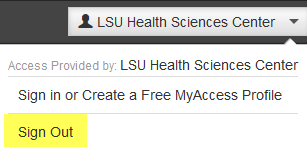
We hope you find all of these subscriptions useful in your teaching, education, and research!
Tags: AccessEmergencyMedicine, AccessMedicine, AccessSurgery, Case Files Collection, Databases, ebooks, Hem/Onc Collection | E-Book News, E-Resource News, Library News, Medicine | Permalink | Comments Off on AccessMedicine upgrade, new products | Posted Tuesday, July 5, 2016 by Marlene Bishop
 The LSU Health New Orleans Stanley S. Scott Cancer Center will host a Cancer Moonshot Summit on June 29 from noon to 4pm at the Louisiana Cancer Research Center, 1700 Tulane Ave. Augusto Ochoa, MD, director of the Cancer Center is hosting the summit. He is the only Louisiana expert on the Blue Ribbon Panel and one of 28 nationwide.
The LSU Health New Orleans Stanley S. Scott Cancer Center will host a Cancer Moonshot Summit on June 29 from noon to 4pm at the Louisiana Cancer Research Center, 1700 Tulane Ave. Augusto Ochoa, MD, director of the Cancer Center is hosting the summit. He is the only Louisiana expert on the Blue Ribbon Panel and one of 28 nationwide.
This meeting will be open to the public and is free. It will cover clinical trials, treatment, philanthropy and advocacy. Registration is preferred: www.surveymonkey.com/r/L87SPTV.
“The White House Cancer Moonshot Task Force’s mission is to double the rate of progress in cancer research and treatment, striving to accelerate what could be achieved in ten years in just five. The goals of the Cancer Moonshot cannot be achieved by one person, one organization, one discipline, or even one collective approach. Rather, solving the complexities of cancer requires the formation of new alliances to defy the bounds of innovation and accelerate the prevention, diagnosis, treatment, and – ultimately – the curing of cancer.” Summits will be happening nationwide on June 29th.
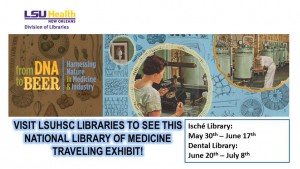
The National Library of Medicine’s traveling exhibit “From DNA to Beer: Harnessing Nature in Medicine and Industry” is now at the LSU School of Dentistry Library! Come explore the history of biotechnology, and peruse our selection of related books and articles. The Dental Library is located on the third floor of the Administration Building, and the exhibit will be there from June 20th-July 8th.
This exhibition was developed and produced by the National Library of Medicine, National Institutes of Health and the Smithsonian’s National Museum of American History. Additional information about this exhibit can be found online: https://www.nlm.nih.gov/hmd/about/exhibition/fromdnatobeer.html.
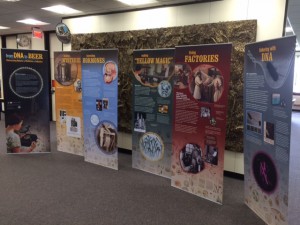
NLM display at Dental Library

Supplemental Materials Display
MICROBES—tiny organisms too small to be seen with the naked eye—have altered human history. Life forms such as bacteria, yeasts, and molds can cause sickness or restore health, and help produce foods and beverages.
Scientists, in partnership with industry, have developed techniques to harness the powers of these microbes. In recent years, headline-grabbing technologies have used genetically modified bacteria to manufacture new medicines.
A glimpse into the past reveals a history of human enterprise that has adapted these tiny organisms for health and profit. This exhibition explores some of the processes, problems, and potential inherent in technologies that use life.
Campus News, Dental Library, E-Resource News, Library Events, Library News, Medicine, Microbiology, Public Health | Permalink | Comments Off on NLM exhibit “From DNA to Beer” now at Dental Library! | Posted Monday, June 20, 2016 by Lucas, Wesley B.

The LSUHSC-NO Libraries are happy to host the National Library of Medicine’s traveling exhibit “From DNA to Beer: Harnessing Nature in Medicine and Industry.” Come explore the history of biotechnology, and peruse our selection of related books and articles. The exhibit will be available at the Isché Library on the third floor of the Resource Center from May 30th-June 17th, and then at the Dental Library on the third floor of the Administration Building from June 20th-July 8th.
This exhibition was developed and produced by the National Library of Medicine, National Institutes of Health and the Smithsonian’s National Museum of American History. Additional information about this exhibit can be found online: https://www.nlm.nih.gov/hmd/about/exhibition/fromdnatobeer.html.
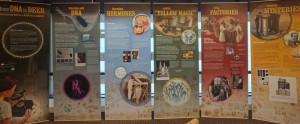
in the Library Commons downtown
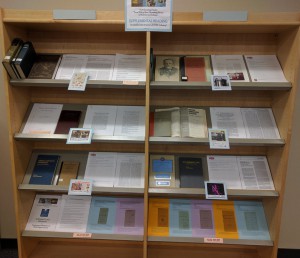
Supplemental Materials Display
MICROBES—tiny organisms too small to be seen with the naked eye—have altered human history. Life forms such as bacteria, yeasts, and molds can cause sickness or restore health, and help produce foods and beverages.
Scientists, in partnership with industry, have developed techniques to harness the powers of these microbes. In recent years, headline-grabbing technologies have used genetically modified bacteria to manufacture new medicines.
A glimpse into the past reveals a history of human enterprise that has adapted these tiny organisms for health and profit. This exhibition explores some of the processes, problems, and potential inherent in technologies that use life.

The registration form for DRAW IT TO KNOW IT – NEUROANATOMY has changed.
DRAW IT TO KNOW IT – NEUROANATOMY is available through our subscription to STAT!Ref.
Initial registration still must be completed on-campus.
From the “Select an institution” drop-down menu, select LSU New Orleans. Leave the Group PIN blank.
Check out the following handouts for more information.
Draw it to Know it Neuroanatomy YOU HAVE IT Handout Draw it to Know it Quick Guide for IP Access
Let us know if you have any problems with registration as we are happy to help you get this set up!
The Library is pleased to announce that we now have The Medical Letter on Drugs and Therapeutics online.
The Medical Letter, Inc. is a non-profit organization whose goal is to provide unbiased drug information. The Medical Letter does not accept advertising, grants, or donations from any outside source, and it is solely supported by subscription fees. The Medical Letter on Drugs and Therapeutics was first published in 1959. The online collection begins in 1988 with v.30. The Library’s print collection includes v.1 (1959) – v.56 (2014). The Medical Letter includes peer-reviewed, evidence-based drug information, CMEs, and 2 ebooks: Handbook of Antimicrobial Therapy and Drugs for Parasitic Infections.
Access is available on campus, as well as off campus by logging in through the Library’s remote access proxy, WAM. There is also an app available from Apple’s App Store, Google Play, and Amazon’s App Store for Android after registering on the Medical Letter’s web site.
The Medical Letter has generously donated access for our university at no charge for one year.
The National Library of Medicine (NLM) recently developed resource lists for three public health emergencies affecting both local and global communities. An incident Web page was created to gather resources on the emerging health issues arising from the Zika Virus and two PDF documents on recent chemical incidents have been updated.
Links to these resources are listed below and are also available on the NLM Disaster Health home page: https://disasterinfo.nlm.nih.gov.
Further information is available from two recent NN/LM PSR NewsBits postings:
http://nnlm.gov/psr/newsbits/2016/01/27/selected-zika-virus-health-information-resources-compiled-by-nlm/ http://nnlm.gov/psr/newsbits/2016/01/14/resources-for-aliso-canyon-natural-gas-methane-leak/.
Zika Virus Health Information Resources: https://disasterinfo.nlm.nih.gov/dimrc/zikavirus.html
Aliso Canyon/Porter Ranch Gas Leak: https://disasterinfo.nlm.nih.gov/dimrc/aliso_canyon_gas_leak.pdf
Lead in Flint, Michigan Water System: https://sis.nlm.nih.gov/enviro/FlintLeadWater.pdf

We’re almost half way through breast cancer awareness month. Bring Your Brave is a new campaign focusing on young women with breast cancer. While breast cancer usually effects women over the age of 45, it does occur in about 11% of younger women. Breast cancer can be hereditary however that’s not always the case. There are ways you can reduce your risk of getting breast cancer such as limiting your alcohol intake, maintaining a healthy weight and breastfeeding.
Breast cancer symptoms include but are not limited to:
- Lump in the breast or underarm/armpit area
- Thickening or swelling of part of the breast.
- Redness or flaky skin in the nipple area or the breast.
- Nipple discharge other than breast milk, including blood.
It is important to get screened if you notice any symptoms early on, in order to start fighting back sooner than later.
For more information, visit:
http://www.cdc.gov/cancer/breast/young_women/bringyourbrave/index.htm
http://www.cdc.gov/cancer/dcpc/resources/features/breastcancerawareness/

The LSUHSC-New Orleans Libraries are pleased to announce that we now have access to the self-directed, alternative learning program, Draw It To Know It – Neuroanatomy. Our access to Draw It To Know It (DITKI) is available through our subscription to STAT!Ref.
This interactive and hands-on learning tool includes narrated video tutorials, practice exams, a brain atlas, and muscle-nerve correlations. Each tutorial includes notes, questions, and the drawing tool.
Registration must be initiated on campus in order to authenticate your access on our institutional site license. Once your account has been created, you will also be able to access this resource off campus.
To register for an account on campus:
- Log in to the STAT!Ref database.
- Scroll down until you see the Draw It To Know It link and click on it:
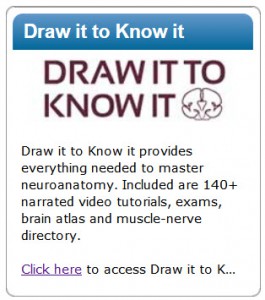
- Click where it says CLICK HERE FOR YOUR SUBSCRIPTION…:
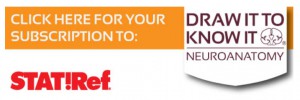
- Fill out the online registration making sure to use your lsuhsc.edu email account.
- After you receive the email confirmation from Draw It To Know It, you are ready to go!
- Access Draw It To Know It through our STAT!Ref database or by going directly to the Draw It To Know It web site: http://drawittoknowit.com/.
- Access is also available using an Apple iPhone or iPad. The app is available for free at the iTunes site. You must be registered with Draw It To Know It in order to use the app.
We hope you find this new resource helpful in your studies!
Whew..Thanks for the information from Janice Nugent, MD, MSN, School of Medicine.
http://www.fox8live.com/clip/11789457/drug-resistance-lice

 myLSUHSC
myLSUHSC

 AccessMedicine E-books may be printed one chapter at a time but may not be saved.
AccessMedicine E-books may be printed one chapter at a time but may not be saved.













